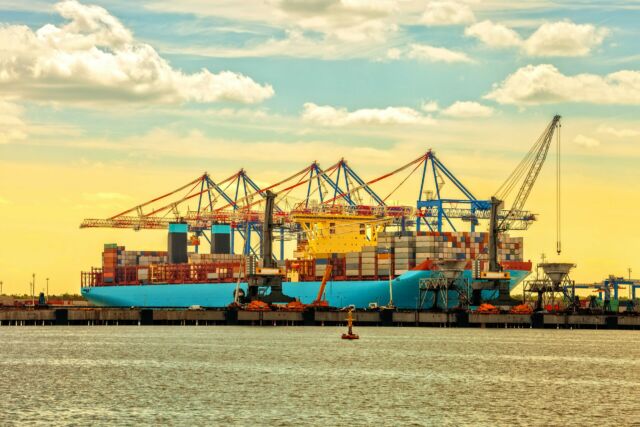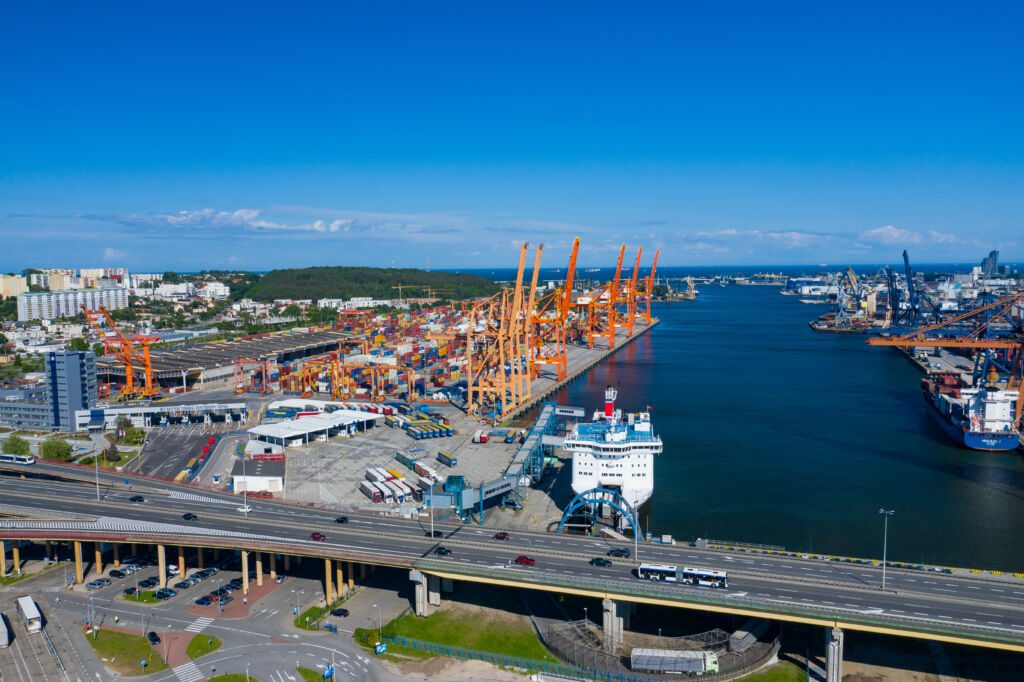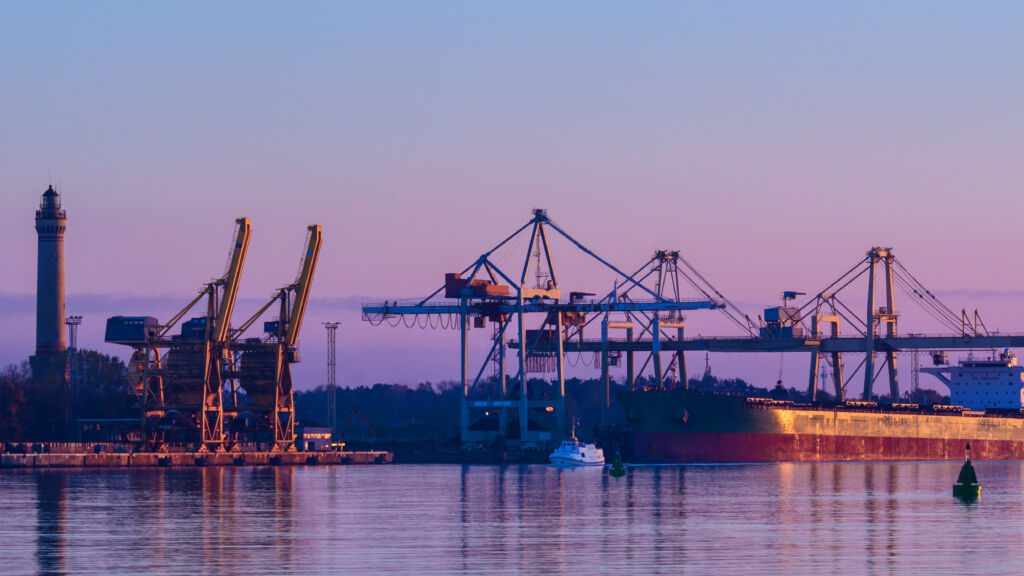A record-breaking year for Polish seaports
14.02.2024
Over 145 million tonnes of cargo handled in the 4 largest seaports in Poland

Another year with further growth
Last year was another year in which record-breaking transshipment results were recorded in Polish seaports of fundamental importance for the National economy – Gdańsk, Gdynia, Szczecin and Świnoujście.
Polish ports recorded an increase in transshipments of 145.7 million tonnes. This is almost 10% more than in 2023 (133 million tonnes). The Port of Gdansk handled a record-breaking result – 81 million tonnes of goods were handled there in 2023, compared to 68 million tonnes in 2022. This is an increase of as much as 19%. Such a good result was mainly due to the transshipment of liquid fuels – 37.6 million tonnes, as much as 47.5% more than in 2022.
The Port of Gdansk has become the fastest-growing European port of the last decade (2013-2023), with a growth rate of 167%. Currently, it is in 1st position in the Baltic Sea in terms of container handling (2.05 million TEU*).
The Port of Gdynia’s transshipment results increased by 5% – 29.4 million tonnes in 2023, compared to 28.2 million tonnes in 2022. The highest dynamics, i.e. 42.7%, were recorded in the amount of grain handled – 6.7 million tonnes, while in 2022 it was 4.7 million tonnes.
Decreases were recorded in the Ports of Szczecin and Świnoujście – of approx. 4% (35.3 million tonnes vs. 36.8 million).
Investments in Gdynia and Świnoujście
The seaport of Gdynia

The Port of Gdynia has been working on the Outer Port project for many years. According to the project, the first transhipments will be carried out at the turn of 2028 and 2029. The Outer Port is one of the most important and largest investments in the Polish maritime economy in recent years. The new area, which will be created as a result of landing part of the reservoir, will have an area of about 151 ha. A container terminal will be located there, with a transshipment capacity of 2.5 million TEU. It will have deep-water quays with a total length of about 2.5 km, which will allow it to handle the largest vessels that can enter the Baltic Sea.
The Outer Port will have a universal character. In addition to being used in container handling, it will also be used in the transshipment of wind farm elements, project cargo (transport of large-size, non-standard or heavy elements) or general cargo and ro-ro (e.g. cars, trains). It will also be important to use the port for defence purposes – it will be able to serve as a transshipment port for the Polish Army and allied troops. The Port of Gdynia is already one of the most important NATO bases on the Baltic Sea.
The seaport of Świnoujście

In accordance with the expansion plans adopted by the Szczecin and Świnoujście Seaports Authority, a Deepwater Container Terminal will be built in Świnoujście in the coming years. The investment is included in the Sustainable Transport Development Strategy until 2030. This document is a consequence of the objectives adopted in 2017 of the Strategy for Responsible Development. First of all, it is about consolidating the position of Polish ports in the Baltic Sea basin. The next step will be to make them key hubs in the global supply chains of Central and Eastern Europe. The ports of Szczecin and Świnoujście are located on the shortest route that connects Scandinavia with Central and Southern Europe. They are also located on the shortest sea route, connecting Finland and the Baltic States with Western Europe. At the same time, the ports are located close to the Danish Straits, which are the only way for large ships to enter the Baltic Sea.
The deep-water container terminal in Świnoujście will be able to accommodate the largest container ships that can enter the Baltic Sea. It will be built to the east of the LNG terminal. It will be located on a pier in the sea and sheltered by a breakwater. Container ships of up to 400 metres in length and several smaller ones will be able to call at the port at the same time. According to estimates, the terminal is expected to handle about 1.5 million TEUs per year.
The implementation of the container terminal project is planned for the period from 2023 to 2028. In 2024 (and partly in 2025), preparatory, design, and work related to obtaining the necessary approvals and permits.
Military significance of the port
Importantly, it will also be possible to use the terminal as an element of the State’s defence system. According to the analyses of the General Staff of the Polish Armed Forces, the terminal will shorten the time of redeployment of troops. It will be important for the HNS (Host Nation Support) system, i.e. creating conditions for the quick reception of allied forces, securing their movement and support during operations on the territory of the Republic of Poland in crisis situations or during armed conflicts.
*TEU (twenty-foot equivalent unit) – a unit of capacity corresponding to the dimensions of a standard container with dimensions of 6.10 x 2.44 x 2.59 meters (approx. 39m3).
Source: Port of Gdańsk, Port of Gdynia, Port of Szczecin-Świnoujście
- Everything
- News (1)
- Events (16)
- Polish companies (2)
-
 Article
ArticleThe Polish automotive industry – production and export
The automotive sector is responsible for over 8 percent of Poland’s GDP
 Event
EventITM INDUSTRY EUROPE 2025
For many years, the event has been a very important place for meetings and exchange of technological…
-
 Event
EventITM INDUSTRY EUROPE 2025
For many years, the event has been a very important place for meetings and exchange of technological…
 Event
EventNew Rules of the Game: The Right Time to Invest in the U.S. Is Now – Why Yo…
How to make the most of your presence at the SelectUSA Investment Summit in Washington, D.C.
-

DOMITECH P. JANISZEWSKI T. WĄŻ SPÓŁKA KOMANDYTOWA
Show more Show lessDomitech is one of the largest among independent distributors of professional tools in Poland, offering a wide range of power tools, power tool accessories, garden power tools, hand tools, measuring tools, construction site equipment and much more.

4IT Sebastian Gruszka
Machinery and parts thereofOther goodsMeasuring instruments and apparatus and parts thereofShow allShow more Show lessOur company specialises in the distribution and integration of automation systems, pneumatics, encoders, sensors, inverters, PLCs, measuring tools, actuators, valves and measuring rulers from leading manufacturers.
The Export Promotion Portal uses cookies to make it easier for users to use the website and for statistical purposes. If you do not block these files, you agree to their use and saving in the memory of your computer or other device. Remember that you can change your browser settings to block the storage of cookies. More information can be found in Privacy Policy and Terms and conditions.

